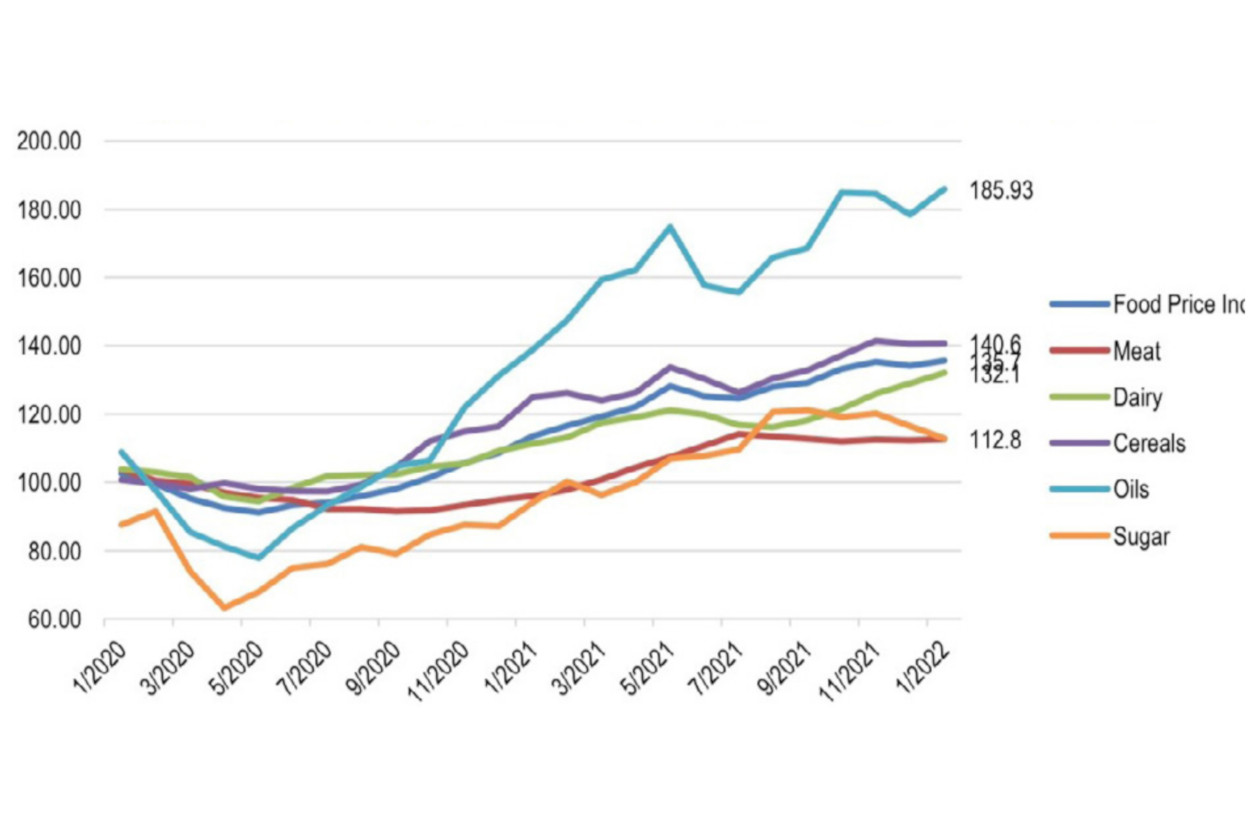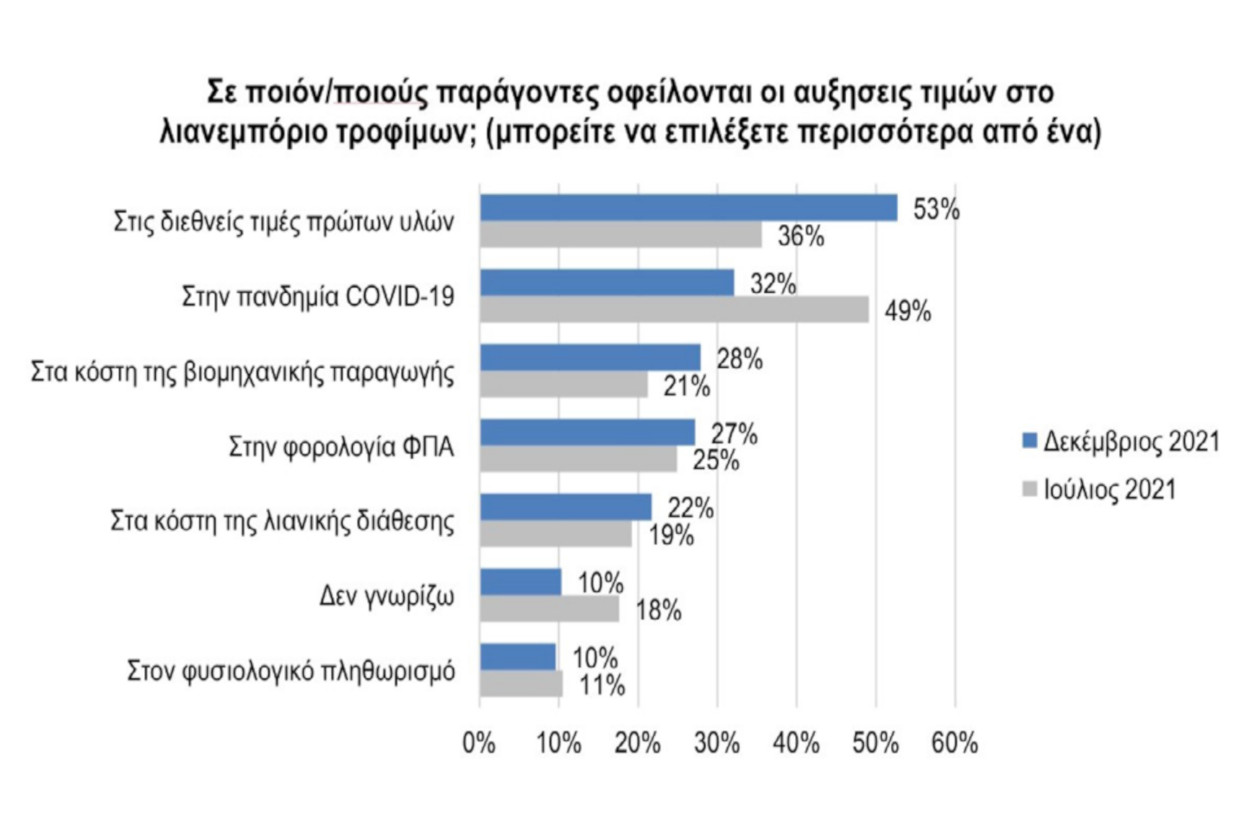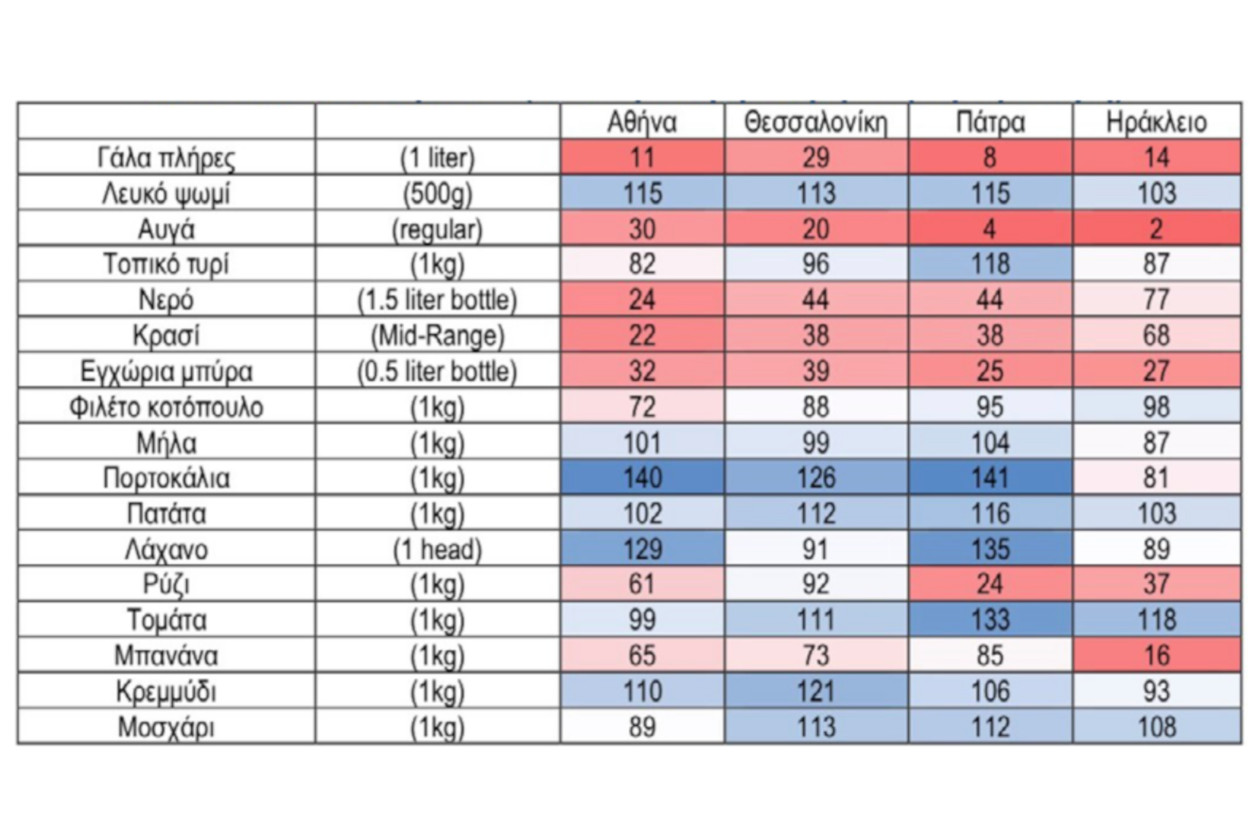IELKA: Greece maintains a satisfactory position in the final prices of food
According to research prepared by the Research Institute of Retail Consumer Goods (IELKA), pressure on international raw material prices will continue to increase in 2022, but at the same time final prices in Greece remain in a satisfactory position compared to the European average.
Monday, February 28, 2022
 |
| Figure 1. Monthly evolution of the FAO food price sub-index 2020-2021 (Source: FAO). |
As for international raw material prices, the United Nations World Food and Agriculture Organization (FAO) 1 is recording negative developments. The index reached 135.7 points in January 2022, an increase of 32% compared to January 2020 and 19% compared to January 2021. All sub-indices showed increases (grains, oils, meat, dairy, sugar). Specifically, compared to the previous year, in January 2021, the prices of meat have increased by 17%, dairy by 19%, cereals by 12%, oils by 34% and sugar by 20%.
In July 2021, when prices increased, Athens ranked 107th on the list of the most expensive cities in the European Union. 49% of consumers attributed this to the pandemic, which fell to 32%, while 36% of consumers attributed the price increase to international raw material prices, rising to 53%. As recorded in the food retail price index in the Numbeo database (Numbeo is a crowd-sourced global database of consumer prices worldwide, with data from 2009), based on data from the last 12 months, from the 175 cities in the European Union , the 5 Greeks are in 107th place (Athens), 120th (Thessaloniki), 109th (Heraklion) 129th (Patras) and 132nd (Larissa) having a lower price than the European Average by -9%, -16%, -11% , -19% and -21% respectively (Table 1). Greece ranks 15th out of 26 countries in the index, below the EU average. For most of the food categories recorded for the determination of the index (Table 1), Greek cities maintained a competitive position, mainly in the categories of fruits, vegetables, bread, and meat.

Figure 2. The main factors affecting the price increase of retail products.

Table 1. Price ranking of Greek cities among 192 European cities.
Source: Foodreporter #0667/2022-02-10
